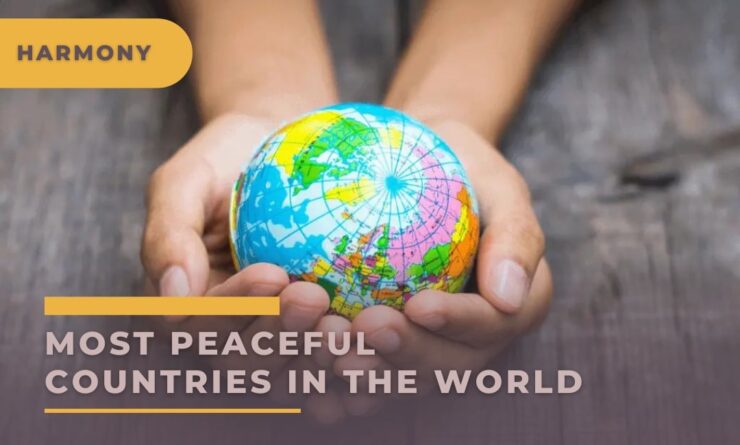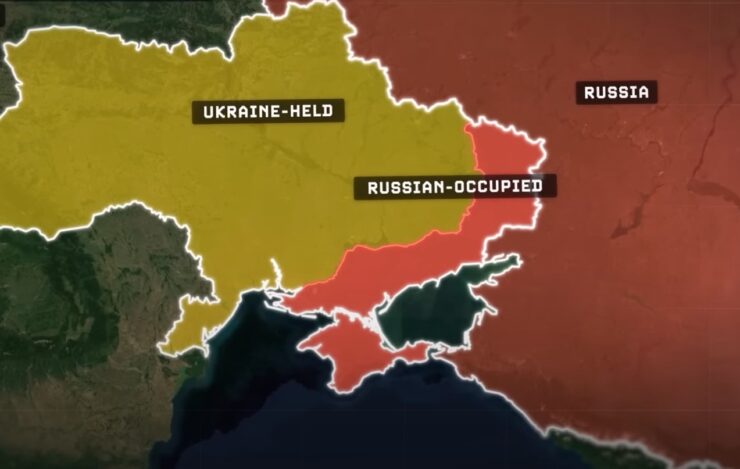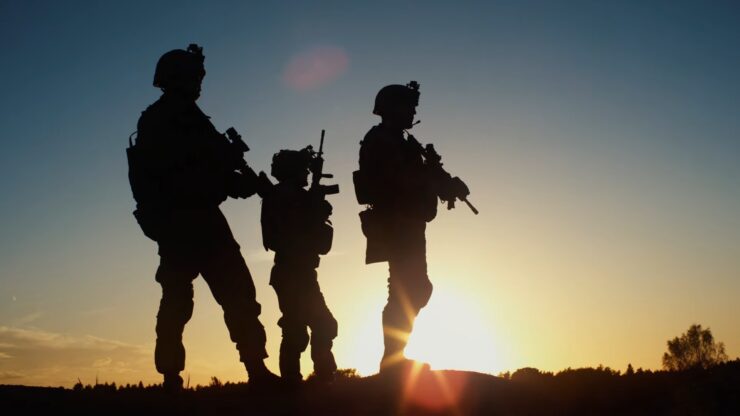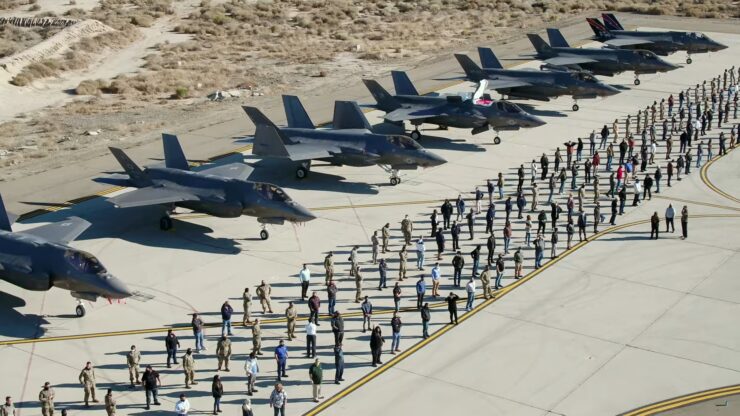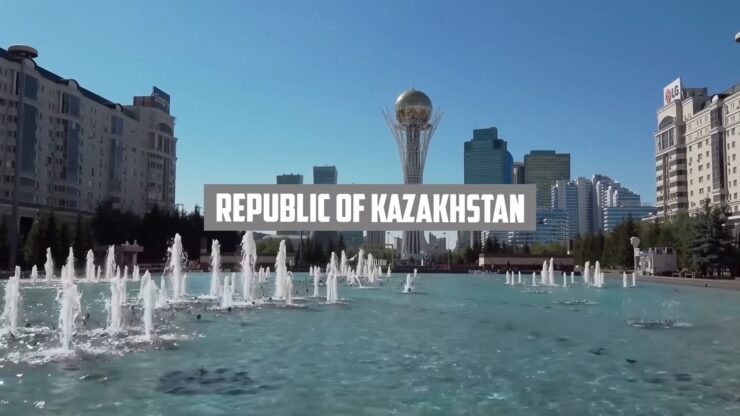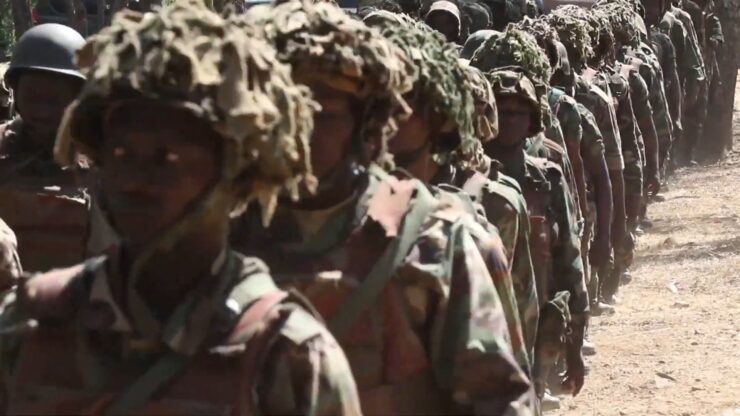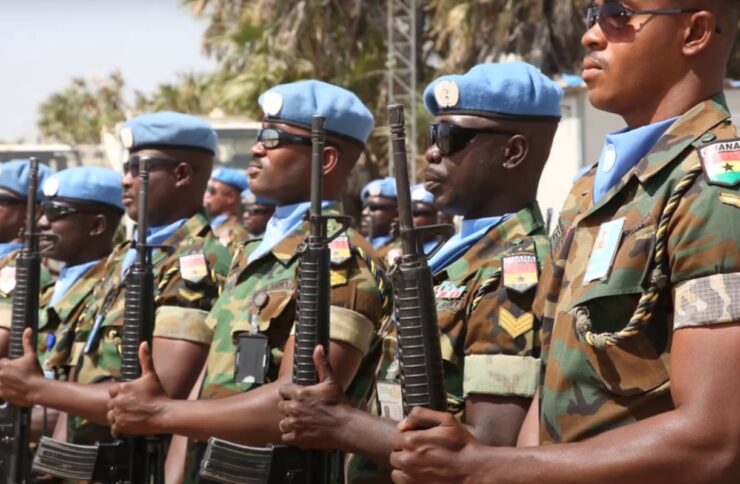Recent global events have sparked a surge in defense spending worldwide. The conflict between Russia and Ukraine, which began in February 2022, has served as a significant catalyst for this shift.
Nations around the globe have become more vigilant about their security in the wake of Russia’s invasion of Ukraine. As per the data from the Stockholm International Peace Research Institute (SIPRI), there was a 3.7% rise in global military expenditure in 2022.
The Western world has largely rallied against Russia’s aggressive actions, providing Ukraine with both aid and weaponry. SIPRI’s data reveals that 2022 saw the highest global military expenditure ever, reaching a staggering $2.2 trillion.
Even traditionally peaceful European nations have boosted their defense budgets in response to the conflict. European defense spending saw a 13% uptick in 2022.
The defense sector has seen an unprecedented influx of investment following Russia’s incursion into Ukraine. Remarkably, these investments seem to be resistant to the threat of a global recession, with high inflation rates having little to no impact on these burgeoning figures.
Significant advancements are happening worldwide in defense. SIPRI reports that the surge in European military spending is the fastest it’s been in the past three decades. Military spending accounts for 4.1% of Russia’s GDP. In 2022, the United States allocated 2.3% of its total military budget, a substantial $19.9 billion, as aid to Ukraine.
India and Saudi Arabia have also significantly ramped up their defense spending, with increases of 6% and 16% respectively, as reported by SIPRI.
The three countries with the largest defense budgets are the United States, China, and Russia. SIPRI data indicates that these three nations were responsible for 56% of total global defense spending in 2022.
The United States remains a major player in global defense expenditure, with a military budget of $886 billion set for the fiscal year 2024. Between 2012 and 2021, the United States increased its investment in military research and development by 24%.
Some of the Biggest Defense Contractors
Despite the global pandemic, the defense industry has remained resilient, maintaining a steady growth trajectory. The Business Research Company reports that the global defense market grew from $534.79 billion in 2022 to $577.19 billion in 2024, marking a compound annual growth rate of 7.9%.
The market is projected to continue this upward trend, with an expected compound annual growth rate of 5.6% from 2024 to 2027, potentially reaching a valuation of $718.12 billion by the end of this period.
The geopolitical unrest has led to a surge in business for defense contractors. Prominent names in the industry include The Boeing Company (NYSE:BA), Huntington Ingalls Industries, Inc. (NYSE:HII), and Lockheed Martin Corporation (NYSE:LMT).
Lockheed Martin, a leading security and aerospace company, is a key defense contractor for the U.S. government, providing advanced aircraft like the F16 and F35. The company reported strong earnings for the first quarter of 2024, with earnings per share of $6.73, surpassing EPS estimates by $0.28, and a revenue of $16.69 billion.
Huntington Ingalls Industries, Inc. (NYSE:HII), the largest military shipbuilder in the U.S., also reported strong earnings for the first quarter of 2024. The company reported earnings per share of $3.23, outperforming EPS estimates by $0.31, and a revenue of $2.67 billion.
The Boeing Company (NYSE:BA), a major manufacturer and seller of commercial and military aircraft, reported a revenue of $19.75 billion for the second quarter of 2024, up 18.4% year over year.
In a world often dominated by conflict and geopolitical tensions, it’s important to highlight countries that prioritize peace, diplomacy, and social harmony. While some nations grapple with violence and unrest, others strive for peaceful coexistence through cooperation and diplomacy. The contrast between these approaches underscores the diverse strategies employed globally in the pursuit of security and stability.
Our Approach
In the face of escalating global defense expenditure, certain nations have managed to maintain relatively low defense budgets. This can be attributed to various factors such as geographical location, economic circumstances, or political conditions.
In order to compile a list of the world’s most peaceful countries, we examined their defense spending, primarily using data from the SIPRI Military Expenditure Database. Our key metric was defense spending as a percentage of GDP.
However, this metric didn’t always provide a clear picture. For instance, Japan, despite having a low defense spending to GDP ratio, doesn’t necessarily qualify as a peaceful country. This discrepancy is due to U.S. policies that restrict Japan’s defense spending from exceeding a certain threshold.
To account for such anomalies, we excluded countries that have been involved in significant violent conflicts over the past century. While some of these nations have experienced internal conflicts such as civil wars, they have not participated in major wars like World War I, World War II, the Korean War, or the Vietnam War.
Countries with unstable environments and low military spending ratios were ranked lower than those with stable environments and low military spending ratios. As a result, our list comprises countries that have not been involved in any major conflicts, regardless of their current status, and have a low military spending to GDP ratio.
The data for each country was manually verified for accuracy using multiple sources, including Global Fire Power, Wise Voter, and the World Bank. The 25 countries were ranked in descending order of their military spending as a percentage of GDP, or according to our hypothesis, from the least to most peaceful.
It’s important to note that there are exceptions. Some countries have low military spending but are ranked as “less peaceful”. We have provided explanations for each of these country’s ranks.
15 Safest Places
15. Moldova
With military expenditure accounting for just 0.32% of its GDP, Moldova, situated in Europe, ranks as one of the most peaceful countries. Despite the impact of the Russian invasion of Ukraine on its peace situation, Moldova has managed to steer clear of major wars, earning it a place on this list.
14. Benin
Located in Western Africa, Benin is a peaceful nation with military spending constituting a mere 0.56% of its GDP. Its membership in the Economic Community of West African States (ECOWAS) has contributed to these low rates. However, its ranking is slightly lower due to internal crime rates.
13. Kazakhstan
Kazakhstan, a Central Asian country rich in mineral resources and a growing economy, spends only 0.51% of its GDP on military. Its participation in the Collective Security Treaty Organization (CSTO) has encouraged low military spending. However, conflicts within the country in 2022 have led to a lower ranking.
12. Switzerland
Switzerland, a European nation known for its neutrality, spends 0.76% of its GDP on defense. Its geographical location greatly aids its defense, allowing it to maintain lower military spending than other countries in the region.
11. Trinidad and Tobago
This Caribbean nation is peaceful and has not been involved in any major conflicts. Despite having a robust economy, Trinidad and Tobago prioritizes peaceful policies and keeps military spending low at 0.72% of its GDP.
10. Dominican Republic
The Dominican Republic, a Caribbean country, maintains low military spending rates of 0.72% of its GDP, facilitated by regional organizations like the Organization of American States (OAS). It is largely a peaceful country.
9. Luxembourg
Luxembourg, a European country, has maintained a peaceful environment since World War II and spends only 0.7% of its GDP on defense. Its NATO membership aids in maintaining this peaceful environment with minimal military expenditure.
8. Gambia
Situated in West Africa, Gambia spends only 0.69% of its GDP on military, facilitated by the Economic Community of West African States (ECOWAS). The country maintains a more peaceful environment compared to other countries in the region.
7. Malawi
Malawi, a landlocked country in southern Africa, has not been part of any major conflict and spends just 0.64% of its GDP on defense. The Southern African Development Community (SADC), a regional organization, helps maintain harmony in the country.
6. Mongolia
Located in East Asia, Mongolia maintains a peaceful environment with military spending accounting for only 0.6% of its GDP. The Collective Security Treaty Organization (CSTO), a regional organization, facilitates these low rates.
5. Cape Verde
Cape Verde has not been involved in any major conflicts. The country spends 0.55% of its GDP on defense and is therefore one of the most peaceful countries in the world
4. Malta
Malta is a peaceful country and has not been involved in any major conflicts. It is a part of the European Union. Despite having a flourishing economy Malta maintains a low military spending rate.
3. Ghana
Ghana is located in West Africa. It is a relatively peaceful country and is a part of the ECOWAS (Economic Community of West African States). It is one of the most peaceful countries in Africa.
2. Ireland
Ireland is one of the most peaceful countries in the world. It is located in Europe. It is a part of NATO and has maintained a low military spending rate.
1. Mauritius
Mauritius is an island in the Indian Ocean. Mauritius is a peaceful country and part of the SADC (Southern African Development Community). The country’s geography facilitates its security and consequently the low military spending rates.
Final Words
In conclusion, while global defense spending has seen a significant surge due to recent geopolitical events, there are still countries that prioritize peace and maintain low military expenditure. These nations, from various regions around the world, serve as reminders that peace and stability are achievable goals.
They demonstrate that even in an increasingly interconnected and complex world, peaceful coexistence is possible. It’s essential to recognize and learn from these countries’ strategies and policies, as they provide valuable insights into maintaining peace and security.
Despite the challenges and conflicts that persist, these peaceful nations stand as beacons of hope, showing us that a more peaceful world is within our reach.

